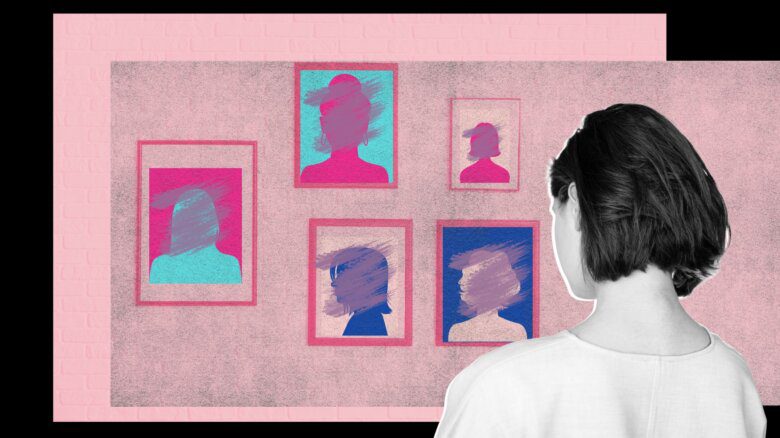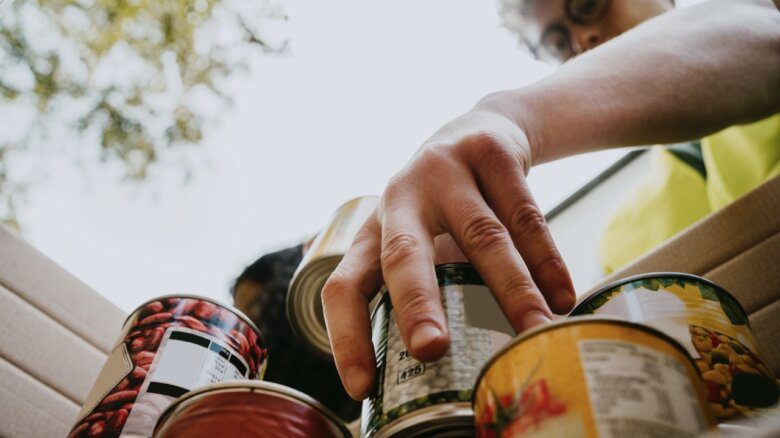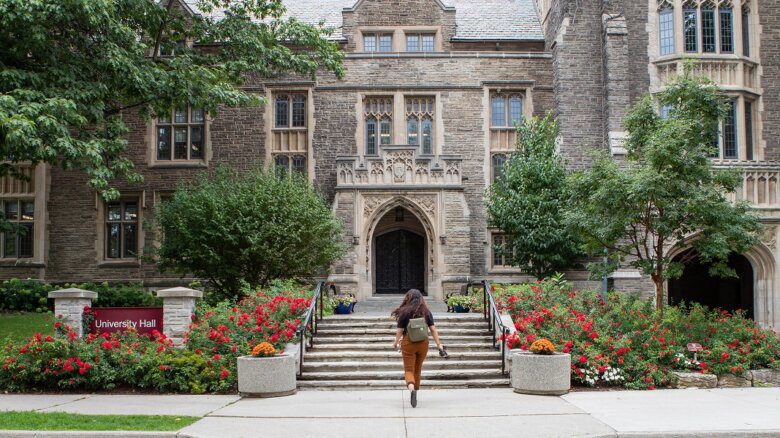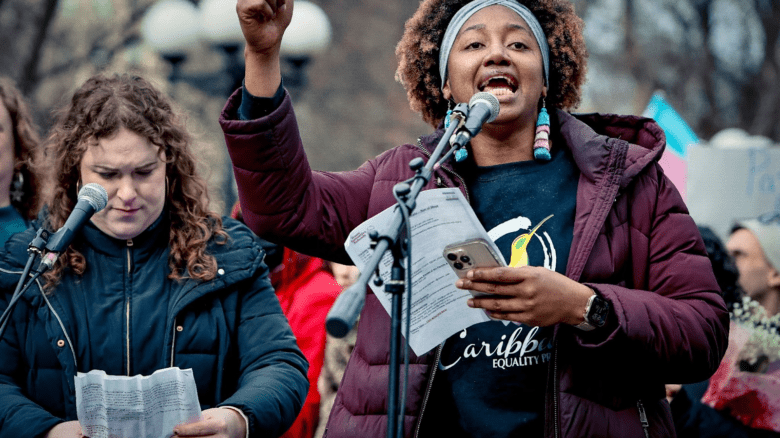Kyiv Pride is one of Ukraine’s most influential queer organizations. Led by a small group of dedicated activists, it has spent the past decade advocating for LGBTQ+ visibility and rights in Ukraine. But Russia’s invasion changed everything and forced organizers to pivot toward new forms of advocacy and support. Despite these challenges, Kyiv Pride continues its work—announcing, for example, a new partnership with Warsaw Pride as well as the opening of a new LGBTQ+ refugee centre.
At the beginning of May, I sat down with the group’s executive director, Lenny Emson, at a café in Kyiv to discuss how Kyiv Pride began and what its future looks like.
“This year is very important to us because we turn 10 years old. Unfortunately, we cannot march in Ukraine for this, but we still need to be visible and we need to be heard,” Emson says.
“We still need to be visible and we need to be heard.”
LGBTQ+ activism has never been easy in Ukraine, although significant progress has been made in recent years. Emson recalls his days as an activist in the early 1990s, when LGBTQ+ rights advocacy was still in its infancy. At the time, the Soviet Union’s collapse had liberated Eastern European nations from Russian imperialism, creating a new wave of political advocacy among Ukrainian civil society—but not all advocates were equally free.
“If you were an open gay activist, it was pretty dangerous,” Emson says. “The community was absolutely in the closet, so we could not do any public action. Everything we did was community mobilization—like, years of it. Mobilize community, educate community. To attract more people to the movement.”
Emson, who at the time identified as a lesbian (he now identifies as trans), was almost arrested for kissing a girl. Even so, he and a handful of other activists continued their work, which included the production of Ukraine’s first gay publcation, One of Us.
“We had people beaten up and some hateful speech. Fortunately, there was no internet at that time. No social media. So, not so much hate speech in that public space, but the media space was absolutely awful,” Emson says. He notes that national media outlets would often ignore human rights issues and ask activists invasive questions about their sex lives, such as “Who is the man in your couple?”
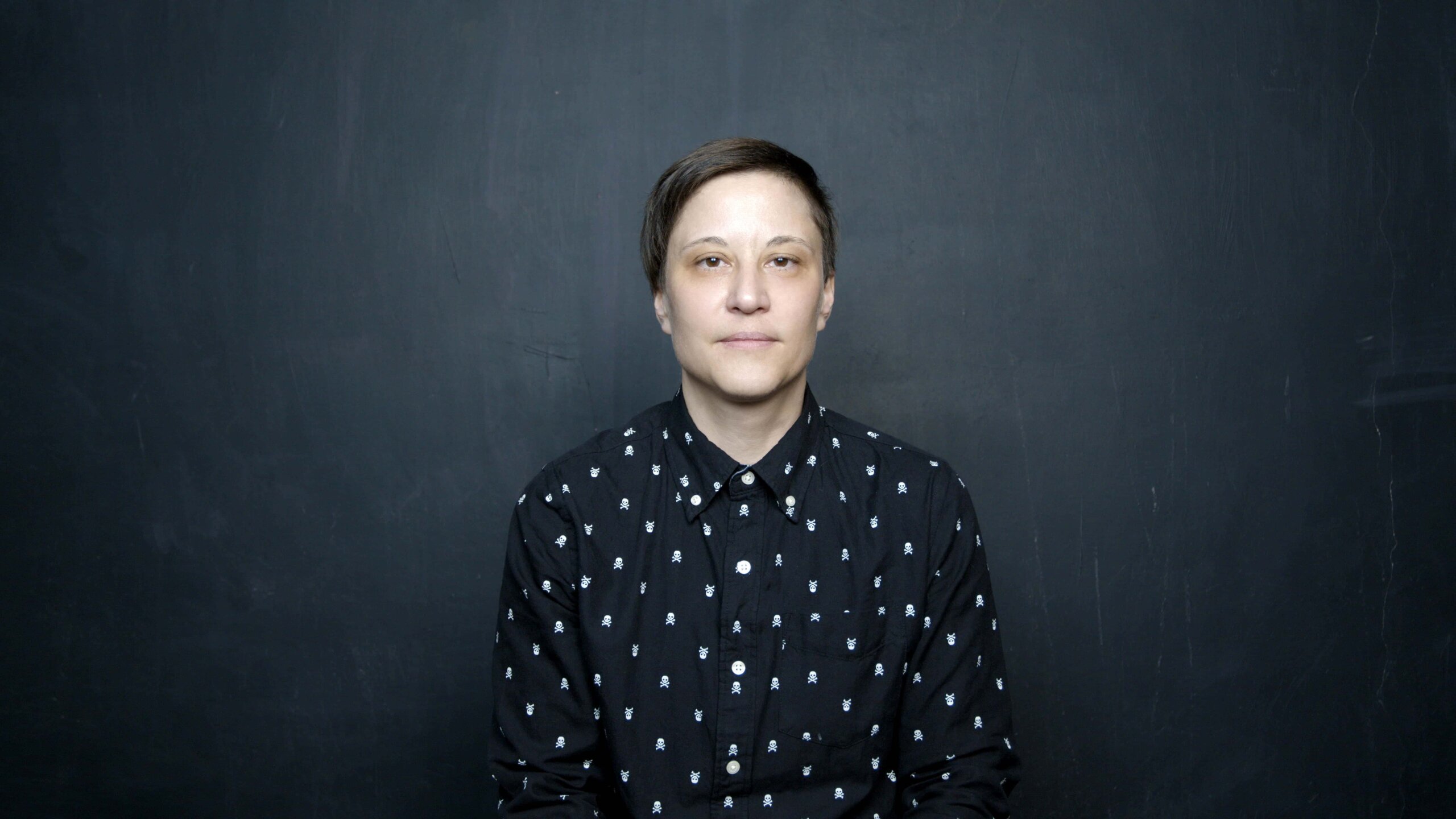
Credit: Adam Zivo
For two decades, Ukraine’s LGBTQ+ activists painstakingly built community networks out of view from the wider public. Queer visibility wasn’t an option; rather, activists focused on finding other queer Ukrainians to show them that they were not alone. Slowly, they built a critical mass of people who could resist public harassment. HIV prevention services were invaluable during this time, Emson says. Foreign funding for public health doubled—a valuable tool to bring queer people together.
Things changed in 2012. At the time, Ukraine was ruled by Viktor Yanukovych, a pro-Russian Putinist. Yanukovych proposed a “gay propaganda” law that would have outlawed any kind of public LGBTQ+ activism. The law was copied from similar legislation proposed in Russia and which became Russian law in 2013.
Kyiv Pride was born as a protest against that law in 2012. Emson, along with several other activists, registered the march route with city officials—the route snaked along the edge of Kyiv’s trendy Podil neighbourhood. About 15 activists showed up, accompanied by other community members who were brave enough to attend. Altogether, there were about 100 supporters. They belatedly realized that the route they had chosen was not ideal—it was located between a river and a highway, which meant there would be no escape if trouble came. And then trouble came.
“Before we started the route, the buses arrived. Many of them. Young guys, masked, with bats and all kinds of weapons,” Emson says. “They just came out of those buses and there were thousands of them. And here were a hundred of us. And the police said, ‘We don’t know and don’t want to have a fight with them, so if you want to go, go. But there will be a lot of blood. We’re not going to protect you.’”
The march was cancelled. Organizers held a press briefing in a nearby park. There were lots of media present but, even so, one activist was tear-gassed by a hooligan, while two more activists, after leaving the event, were caught in a street and beaten up. The violence was neither condemned nor supported by the public.
“Ukrainians are not aggressive people, in large, so they would not accept this. That level of violence. So, on one hand, violence is not accepted. On the other hand, LGBTQ+ people must not be in the street. They must be in the closet—because [the wider public thinks] we influence their children,” Emson says.
The next year, events proceeded differently. A handful of European politicians, mostly from Germany, decided to march with Kyiv Pride. The mayor of Munich joined in, as did several members of the European Parliament. Their participation attracted a tsunami of international attention, forcing the local government to intervene. The police built a 200-metre protected corridor, inside of which Kyiv Pride then marched, separated from the thousands of protestors who had come to heckle them.
Then, in 2014, Ukrainians rose up in protest against Yanukovych, outraged by his corruption and his sabotage of Ukraine’s negotiations to join the European Union. The incident, known as the Maidan Revolution (alternatively: the “Revolution of Dignity”) was difficult and sometimes violent. Yanukovych eventually fled to Russia and a new government was installed. Putin subsequently punished Ukraine for its disobedience by annexing Crimea and instigating a shadow war in Ukraine’s eastern-most regions.
Given the tumult, the municipal government denied Kyiv Pride permission to march that year, arguing that it was not an appropriate time to have a celebration. “We said, it’s not a celebration for us. We’re not celebrating anything. It’s a protest demonstration. But, still, we were not allowed to march,” Emson says.
“What we achieved is absolutely because LGBTQ+ activists were insistent in the fight for rights.”
After Maidan, Ukraine’s trajectory shifted decisively toward Europe. Local Ukrainians began to rethink their social attitudes, while government policies changed dramatically. The homophobic “gay propaganda law” died with Yanukovych’s exile and was never resurrected.
Ukraine’s subsequent pro-European governments consistently instituted LGBTQ+-friendly legislation—such as an anti-discrimination employment law in 2015, a liberalization of the requirements to legally recognize the gender of trans Ukrainians in 2016 and ending a ban on blood donations from gay and bisexual men in 2021. While reflecting changing attitudes within Ukraine, there is also a realpolitik dimension to these laws—in order for Ukraine to secure European Union membership, it needs to meet certain legal conditions, including a robust protection of minority rights.
Many argue that the Maidan Revolution and Ukraine’s pivot toward Europe mark a real turning point for LGBTQ+ advocacy. Emson, however, disagrees. He feels that narrative is popular among younger Ukrainian activists who were not politically active before the mid-2010s. But Emson argues that focusing on Maidan obscures the work of activists who set the stage for the advancement of LGBTQ+ acceptance in recent years. “I would say that what we achieved is absolutely because LGBTQ+ activists were insistent in the fight for rights,” Emson says.
In 2015, Kyiv Pride marched again. This time, there were between 300 and 500 supporters, including a delegation of German politicians and representatives from Montreal Pride. Once again, the local police provided protection—and yet a radical right wing group showed up and managed to overwhelm them.
“We ran away and the police stood up exactly where we were,” Emson recalls. “At this moment, the right radicals threw a bomb or something and a piece of shrapnel hit a policeman in the neck and there was a lot of blood. And I think, at this point, it was a turning point for society to see that this violence is not good. That this is beyond measure and that this cannot be accepted.” The policeman survived and Emson and other LGBTQ+ activists raised money to support him, which helped win over new supporters.
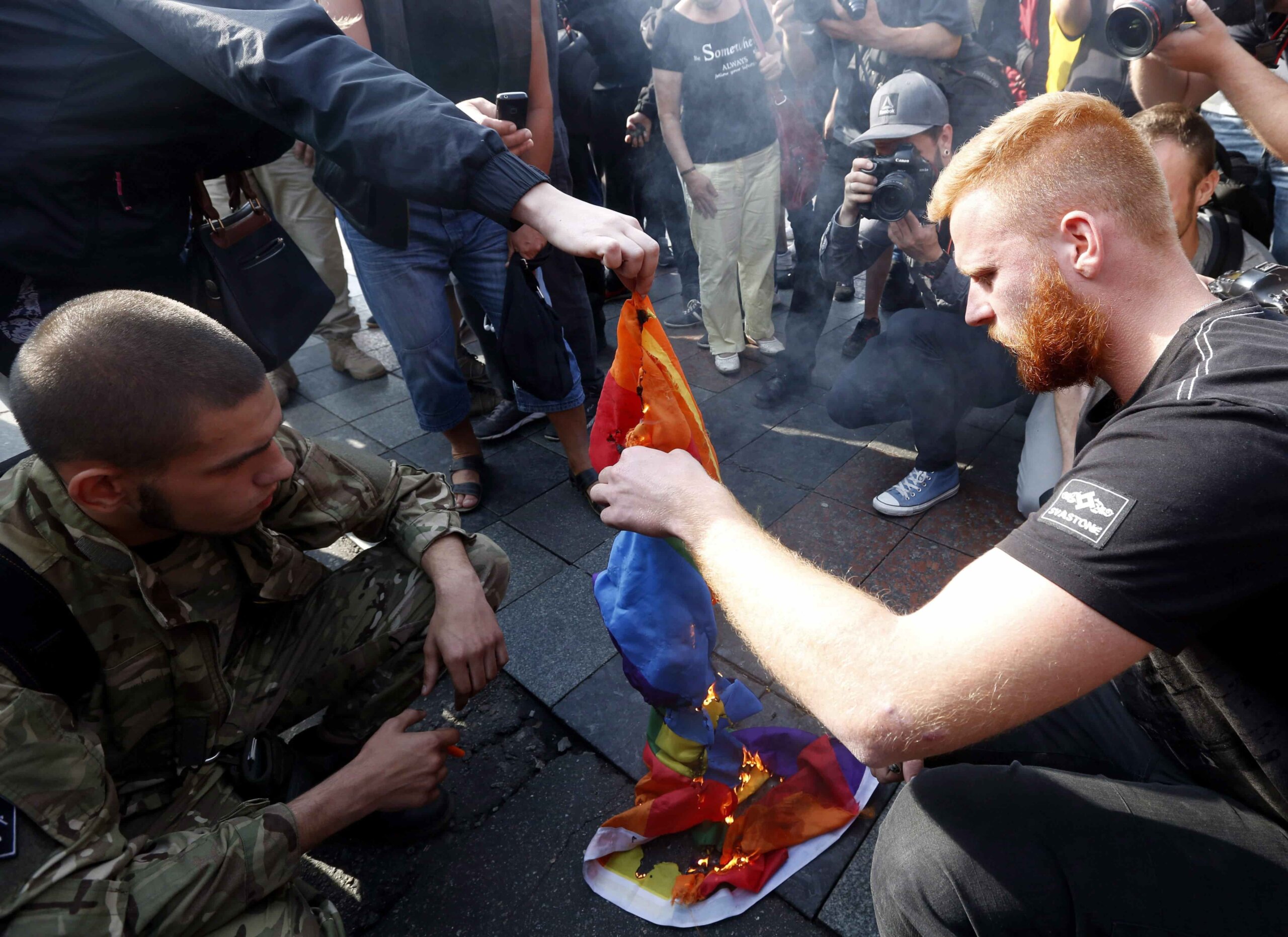
Credit: Sergei Chuzavko/AP Photo
Every year after that point, Kyiv Pride grew. In 2021, 7,000 marchers came together in support of LGBTQ+ rights and were met by only a few hundred counter-protestors. This reversal of power, which was achieved in just under 10 years, was stunning. Emson notes that the Ukrainian media and government were consistently supportive of LGBTQ+ issues during this time. Homophobic and transphobic attacks were generally portrayed as an embarrassment to the country.
However, another problem emerged: hate crimes and radical right-wing activism were increasing. Though extremist groups existed on the fringes of Ukrainian society, they were loud and sometimes dangerous. Emson, as well as many other Ukrainian LGBTQ+ activists I spoke to, suspect that these groups are being financed by Russia—Putin is known for his generous patronage of right-wing radicalism throughout Europe.
“When they would protest against us, they had all these banners and flags—and I’m a Pride organizer and event manager. I know how much this stuff costs. I know how much money is behind them,” Emson says.
These radical right-wing organizations enjoy a certain degree of legitimacy; they are officially registered as nonprofit organizations. How much support these groups have within official circles is hard to gauge. Emson feels that attitudes are changing. “When we talk to the police, the police know about them and monitor them and try to prevent them from attacking us. What I’m saying is that the state is protecting us. We are having this dialogue with the police, and compared with 10 years ago, this dialogue is more productive,” Emson says.
Assessing a country’s overall attitudes is difficult at the best of times, let alone during a war. In 2019, the Washington, D.C.-based think tank Pew Research released a report showing that only 14 percent of Ukrainians believed homosexuality should be accepted by society. But when the Ukrainian-based LGBTQ+ rights-monitoring group Nash Svit (sometimes spelled Nash Mir) compared findings from two surveys it conducted, one from 2016 and the other taken in 2022, during the war, it found a marked increase in positive responses toward LGBTQ+ Ukrainians, with almost 64 percent of Ukrainians believing queer and trans folk should have equal rights—double the number from six years before.
The existence of right-wing hate crimes has often been used to misrepresent Ukraine as a country controlled by Nazis and fascists. This narrative forms the foundation of Russia’s propaganda war against Ukraine and allows Putin to sell his colonial invasion as “de-Nazification.” The Nazi myth not only shores up Putin’s domestic support for foreign aggression, but it also muddles how Ukraine is viewed internationally.
The narrative infuriates Ukrainains—especially those who allege that Putin is funding right-wing activism in Ukraine. If the allegations are true, then Ukrainians are being murdered so Putin can “liberate” them from an extremist fringe that he himself groomed.
Like the majority of their compatriots, most queer and trans Ukrainians want more military support from the international community to defend their homeland. It’s a life-or-death situation for many, because Ukrainians allege that Russia maintains “kill lists” of human rights activists living in Ukraine, including LGBTQ+ activists. Some activists have even seen their friends and associates on these lists. Given how Russia has treated LGBTQ+ people—for example, torturing and murdering gay men during the 2017 gay purge in Chechnya—Ukraine’s defeat could easily mean the death of queer activism in the country.
“[The Russians] created this picture, and now people abroad believe that Ukraine is a Nazi country,” Emson says. “If you as a person believe in this concept, you need to ask yourself: What do you know about Ukraine? Have you been to Ukraine? Do you know any Ukrainians? What do you believe the most: do you believe Ukrainians or the Russian propaganda around you?
“It’s erasing the work of the whole LGBTQ+ community that is trying to build Ukraine, to build a future for Ukraine that will be good for all people, including LGBTQ+ people.”
As Putin’s invasion continues to rage, it is too risky to host Kyiv Pride in Ukraine this year. Many parts of Ukraine that are not near the front lines are trying to return to normal, to protect both the economy and citizens’ mental health, but the situation is always unpredictable. For example, after a month of peace, Kyiv was hit by missile strikes in early June.
In light of this, Kyiv Pride has partnered with Warsaw Pride. Together, the two organizations will march in Warsaw on June 25, showing solidarity in their opposition to homophobia, transphobia and Russian imperialism. Poland has been a stalwart ally of Ukraine throughout the war and has warmly accepted millions of Ukrainian refugees. Many Poles empathize with Ukraine and remember Poland’s struggles to free itself from Soviet domination just a generation or two ago.
“Politically, it’s very important for us. We will be visible for the West and for the East. If we’re marching somewhere, like in Toronto, we will be visible in North America only. But we want to be visible, as the LGBTQ+ community, for Ukraine as well. Politically, Warsaw Pride is the right choice for us to be visible everywhere,” Emson says.
Men between the ages of 18 and 60 are still barred from leaving Ukraine without special permission—a major impediment to Ukrainian participation in Warsaw Pride —but, still, Emson feels an imperfect march is better than no march at all.
Meanwhile, Kyiv Pride has been busy operating a new LGBTQ+ refugee shelter, which it launched in mid-May. Emson spent weeks trying to find a suitable location—many landlords were unwilling to work with him, partially because of anti-LGBTQ+ prejudice, but also because they were concerned that refugees would damage their premises.
The shelter now provides LGBTQ+ refugees with a few days of accommodation, giving them time to breathe until they find more permanent housing. The exact location of the shelter must be kept a secret to avoid harassment from far-right groups, but it is a two-storey apartment with a large, attic-like space that holds approximately 20 beds. The expansive lower floor doubles as a community centre. Though Ukraine’s outflow of refugees has significantly slowed since the beginning of the war, Emson notes that many refugees are returning home, and shelters will be important for them.
Though much attention has been given to queer refugees, not all queer Ukrainians have been displaced. “Some people don’t want to flee. They want to stay where they are. They want to stay in their country,” Emson says. “There is a part of the community that wants to protect the country, so they joined the military and territorial defence units. I want the international community to know that we equally support everyone, and we equally respect everyone. This is what is important: to respect every choice and to respect every point of view.”
“People do not see the big chunk of the community that is staying in the country. It is important to see this part of the community and respect their choice as well, and to help them. We need to support these people on the ground, with food, medications, shelter and all these needs.”
To donate to Kyiv Pride, go here. And please check out our earlier story on how to help LGBTQ+ Ukrainians in need.
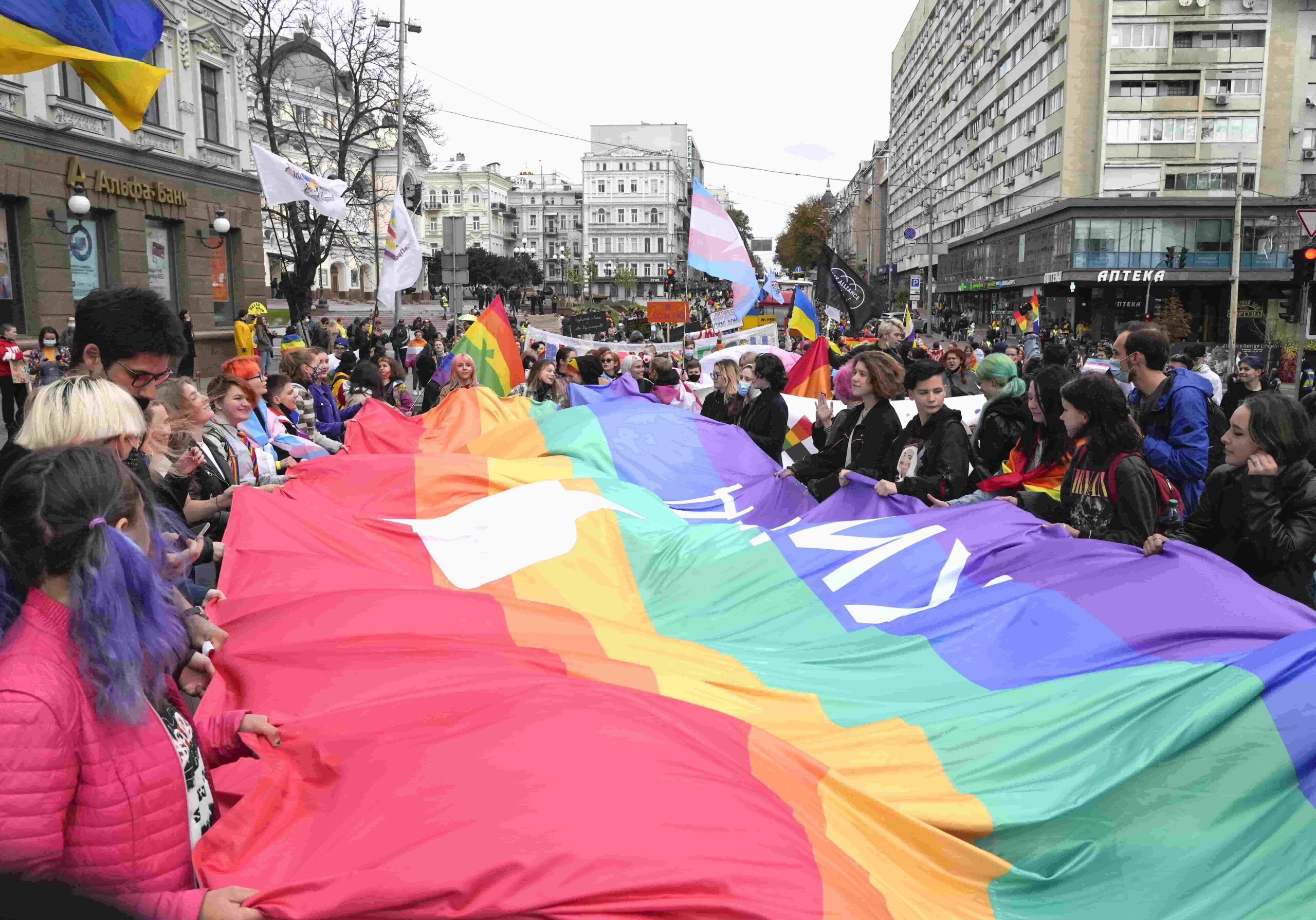

 Why you can trust Xtra
Why you can trust Xtra